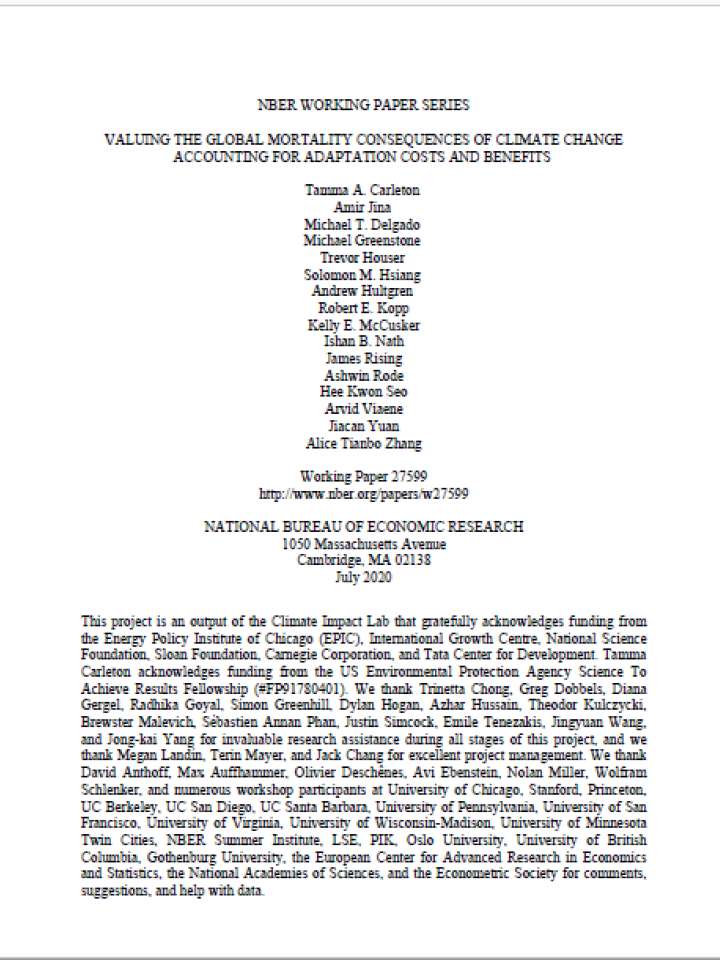Valuing the global mortality consequences of climate change accounting for adaptation costs and benefits
This paper develops the first globally comprehensive and empirically grounded estimates of mortality risk due to future temperature increases caused by climate change. Using 40 countries' subnational data, we estimate age-specific mortality-temperature relationships that enable both extrapolation to countries without data and projection into future years while accounting for adaptation. We uncover a U-shaped relationship where extreme cold and hot temperatures increase mortality rates, especially for the elderly, that is flattened by both higher incomes and adaptation to local climate (e.g., robust heating systems in cold climates and cooling systems in hot climates). Further, we develop a revealed preference approach to recover unobserved adaptation costs. We combine these components with 33 high-resolution climate simulations that together capture scientific uncertainty about the degree of future temperature change. Under a high emissions scenario, we estimate the mean increase in mortality risk is valued at roughly 3.2% of global GDP in 2100, with today's cold locations benefiting and damages being especially large in today's poor and/or hot locations. Finally, we estimate that the release of an additional ton of CO2 today will cause mean [interquartile range] damages of $36.6 [-$7.8, $73.0] under a high emissions scenario and $17.1 [-$24.7, $53.6] under a moderate scenario, using a 2% discount rate that is justified by US Treasury rates over the last two decades. Globally, these empirically grounded estimates substantially exceed the previous literature's estimates that lacked similar empirical grounding, suggesting that revision of the estimated economic damage from climate change is warranted.
Explore further
